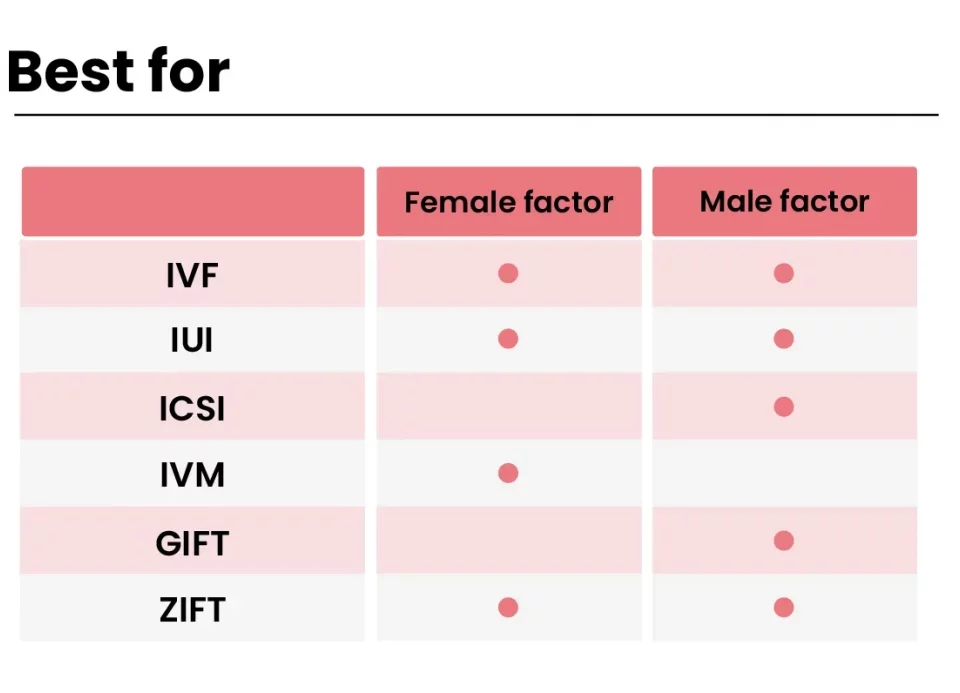
Is IVF Biblical? Exploring Faith, Science, and Family
April 20, 2025
How Much Does IVF Cost in Indiana? Your Complete Guide to Affording Fertility Treatment
April 20, 2025How to Determine Your Due Date After IVF

How to Determine Your Due Date After IVF
Congratulations! If you’re reading this, you’re likely on an exciting journey through in vitro fertilization (IVF) and dreaming about the day you’ll meet your little one. One of the first questions that pops up after a successful IVF cycle is, “When is my baby due?” Unlike a natural pregnancy, where due dates are often based on the last menstrual period, IVF offers a more precise way to pinpoint that special day. Let’s walk through everything you need to know about determining your due date after IVF, with practical tips, the latest insights, and a few surprises along the way.
Why IVF Due Dates Are Different
Pregnancy due dates typically hinge on a bit of guesswork—think counting 40 weeks from the first day of your last period. But with IVF, things get a lot more exact. Why? Because doctors know the exact moment conception happens, whether it’s the day of egg retrieval or embryo transfer. This precision is a game-changer, cutting through the uncertainty that comes with natural conception.
In a natural pregnancy, ovulation could happen anywhere from day 10 to day 16 of your cycle, and sperm can hang around for up to five days waiting for an egg. That’s a lot of variables! With IVF, the timeline is controlled in a lab, so your due date isn’t a rough estimate—it’s a calculated milestone based on science.
The Basics of Calculating an IVF Due Date
So, how do you figure out when your baby might arrive? It all depends on a few key details from your IVF process: the type of transfer (fresh or frozen), the age of the embryo when it was transferred, and the date of that transfer. Let’s break it down step-by-step.
Step 1: Know Your Transfer Type
- Fresh Embryo Transfer: This happens a few days after egg retrieval, usually on day 3 or day 5 of embryo development.
- Frozen Embryo Transfer (FET): The embryo is thawed and transferred later, sometimes months after retrieval.
The transfer type matters because it affects how doctors calculate the starting point of your pregnancy.
Step 2: Check the Embryo’s Age
Embryos are typically transferred at one of two stages:
- Day 3: The embryo is 3 days old, with about 6-8 cells.
- Day 5: Known as a blastocyst, it’s 5 days old and more developed.
The embryo’s age at transfer adjusts the timeline slightly, since a day 5 embryo is “older” than a day 3 one.
Step 3: Do the Math
Here’s the simple formula doctors use:
- For a day 5 embryo: Add 261 days to the transfer date.
- For a day 3 embryo: Add 263 days to the transfer date.
Why the difference? A day 5 embryo has a 2-day head start in development compared to a day 3 embryo. For fresh transfers, some clinics might use the egg retrieval date instead, adding 266 days (38 weeks) to account for the full process from retrieval to birth.
Example Time!
Let’s say you had a day 5 fresh embryo transfer on April 1, 2025 (hey, that’s today!). Add 261 days:
- April 1, 2025 + 261 days = December 18, 2025.
That’s your estimated due date (EDD)! For a frozen transfer, it’s the same deal—just use the transfer date.
Fresh vs. Frozen: Does It Change the Due Date?
You might wonder if a frozen embryo transfer (FET) messes with the timeline. Good news: it doesn’t! Whether your embryo was fresh or frozen, the due date calculation stays the same—it’s all about the transfer date and embryo age. The freezing process pauses development, so a thawed day 5 embryo is still considered 5 days old when it’s transferred.
However, FET cycles often involve extra steps, like priming your uterus with hormones. While this can shift when the transfer happens, it doesn’t change the due date once the embryo is in place. A 2022 study from the Journal of Assisted Reproduction and Genetics confirmed that live birth rates—and due date accuracy—hold steady across fresh and frozen transfers when adjusted for embryo age.
Interactive Quiz: What’s Your IVF Due Date?
Ready to test your skills? Take this quick quiz to see if you can nail down a due date!
- Your day 3 embryo was transferred on March 15, 2025. What’s your EDD?
- A) December 1, 2025
- B) December 3, 2025
- C) December 5, 2025
- You had a day 5 FET on April 10, 2025. When’s your baby due?
- A) December 25, 2025
- B) December 27, 2025
- C) December 29, 2025
(Answers: 1-B, 2-C. Add 263 days to March 15 or 261 days to April 10—check a calendar to confirm!)
What Doctors Don’t Always Tell You
While the basic formula is straightforward, there’s more to the story. Here are three things that often fly under the radar but can tweak your due date or your expectations.
1. Embryo Quality Can Shift Timing
Not all embryos grow at the same pace. A top-grade blastocyst might implant faster than a lower-grade one, potentially nudging your due date a day or two earlier. A 2023 study from Fertility and Sterility found that high-quality embryos had a slightly shorter time to implantation (6-8 days) compared to average ones (7-10 days). It’s a small difference, but it’s worth asking your embryologist about your embryo’s grade.
2. Uterine Receptivity Matters
Your uterus needs to be ready for the embryo to stick. In FET cycles, doctors time the transfer to your “window of implantation”—usually 5-7 days after progesterone starts. If your window is off (say, due to hormonal quirks), the embryo might implant a bit later, subtly shifting your timeline. Emerging research using endometrial receptivity tests (like the ERA) shows that up to 25% of women have a non-standard window, which could adjust due date estimates by a few days.
3. Twins or Multiples Change Everything
If you’re carrying twins (or more!), your due date might not mean much. Multiples often arrive early—twins average 35-37 weeks, not 40. So, while the calculator says December 18, your babies might show up in late November. The American College of Obstetricians and Gynecologists (ACOG) notes that only 40% of twin pregnancies reach full term, so plan accordingly!
Practical Tips for Tracking Your Due Date
Now that you’ve got the basics, here’s how to stay on top of it all:
✔️ Use an IVF Due Date Calculator: Online tools (like those from SingleCare or fertility clinics) let you plug in your transfer date and embryo age for an instant EDD.
✔️ Ask Your Clinic: They’ll give you an official due date based on their records—double-check it matches your math.
✔️ Track Milestones: Count weeks from the transfer date (e.g., 6 weeks post-transfer = 8 weeks pregnant for a day 5 embryo).
❌ Don’t Rely on LMP: Your last period doesn’t apply here—IVF skips that step.
The Science Behind the 40-Week Myth
You’ve probably heard pregnancy lasts 40 weeks. But here’s the catch: that’s based on natural conception, where week 1 starts before you’re even pregnant (at your last period). With IVF, the clock starts at conception—about 2 weeks later. That’s why IVF pregnancies are technically 38 weeks from transfer, not 40. It’s a small shift, but it explains why your OB might say you’re “further along” than you think.
A 2021 study in Ultrasound in Obstetrics & Gynecology found that IVF pregnancies aligned closely with this 38-week timeline when tracked from transfer, with 85% of singletons born within 5 days of their EDD. Pretty reliable, right?
Poll: When Do You Start Counting?
Let’s get interactive! When do you think your pregnancy “starts”?
- A) Day of egg retrieval
- B) Day of embryo transfer
- C) Day of positive pregnancy test
Drop your vote in your mind (or share with a friend!), and I’ll spill the tea: most experts pick B—transfer day—since that’s when the embryo enters the uterus.
Adjusting Expectations: What If It’s Not Exact?
Even with IVF’s precision, babies don’t always follow the script. Only about 4% arrive on their due date, IVF or not. Here’s what could nudge things off track:
- Preterm Birth: About 12% of IVF singletons and 60% of twins are born before 37 weeks, per CDC data.
- Growth Rates: Some IVF babies grow faster or slower due to factors like maternal age or placental health.
- Lab Variations: Rarely, embryo development in the lab might not sync perfectly with uterine timing.
If your ultrasound at 8-12 weeks shows a different size than expected, your doctor might tweak the EDD. Don’t panic—it’s just fine-tuning.
Unique Insight: The Donor Egg Difference
Using donor eggs? Your due date calculation doesn’t change, but there’s a twist. Since donor eggs come from younger women (usually under 35), they often lead to healthier embryos and slightly lower preterm rates—10% vs. 12% for own-egg IVF, according to a 2024 Human Reproduction analysis. That means your EDD might be more likely to stick. Plus, your age doesn’t affect the embryo’s timeline—pretty cool, huh?
Real-Life Story: Sarah’s IVF Journey
Meet Sarah, a 38-year-old mom from Texas. She had a day 5 FET on June 10, 2024. Her clinic calculated her due date as February 26, 2025 (261 days later). At her 12-week ultrasound, the baby measured a day ahead, but her OB stuck with the original EDD. Sure enough, her son arrived February 24—two days early. “Knowing the exact date gave me peace of mind,” Sarah says. “I planned everything around it, and it was spot-on.”
Beyond the Due Date: Planning Ahead
Your EDD isn’t just a date—it’s a launchpad. Here’s how to use it wisely:
Step-by-Step Prep Guide
- Mark Your Calendar: Circle your EDD and count back 3 months for your third trimester start.
- Book Appointments: Schedule your first OB visit 2-4 weeks post-transfer.
- Plan for Multiples: If you transferred two embryos, prep for an earlier delivery (35-37 weeks).
- Adjust for Flexibility: Pack your hospital bag by week 36—babies love surprises!
Checklist: What to Ask Your Doctor
✔️ What’s my official EDD based on the transfer?
✔️ Does embryo quality or my health affect it?
✔️ How will we adjust if the ultrasound shows a different size?
The Emotional Side of Waiting
Waiting 9 months can feel like forever, especially after the rollercoaster of IVF. That due date becomes your North Star—but it’s okay if it shifts. One mom I spoke to, Lisa, said, “I obsessed over December 15, but my twins came November 28. It taught me to roll with it.” Lean on your support crew, and celebrate each milestone—your due date is just one part of the adventure.
Latest Trends: What’s New in 2025?
IVF due date science isn’t standing still. Here’s what’s buzzing as of April 2025:
- AI Predictions: Clinics are testing AI to predict due dates based on embryo growth patterns, with early trials showing 90% accuracy within 3 days.
- Genetic Timing: Preimplantation genetic testing (PGT) might soon estimate implantation speed, refining EDDs further.
- Social Media Buzz: On platforms like X, parents are sharing FET due date stories, with many noting how frozen transfers feel “more predictable” than fresh ones.
Final Thoughts: Your Due Date, Your Story
Determining your due date after IVF is like getting a sneak peek at your future. It’s a blend of science, a dash of patience, and a whole lot of hope. Whether it’s December 18 or a surprise November arrival, that date is yours to cherish. So grab a calendar, crunch the numbers, and start dreaming about the tiny toes you’ll meet. You’ve got this!

